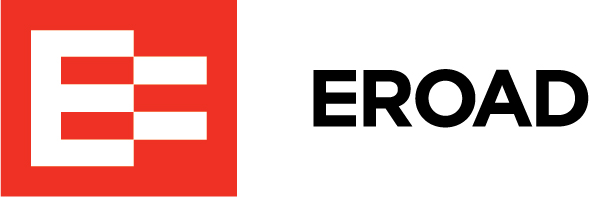AOBRD vs. ELD: What's the difference?
Breaking down the differences between AOBRDs and ELDs, so your transition is as smooth as possible.What is an AOBRD?
An AOBRD, or Automatic On-Board Recording Device, is an older style of electronic logging device (ELD) that complied with 49 CFR 395.15. It is a piece of hardware that connects to a vehicle’s engine to record a driver’s hours-of-service (HOS).
Are AOBRD’s still compliant?
NO.
Fleets using AOBRDs were “grandfathered”, until December 16, 2019. But that deadline has now passed and FMCSA has made it clear they won’t be extending the deadline for transitioning to ELD.
AOBRD vs ELD Differences
There are key differences between AOBRD devices and ELDs. The main difference is that AOBRDs do not record or display as much data as ELDs.
Some of the other differences include:
- Roadside Inspections
- Location Records
- Automated Driving Status
- Editing Driver’s Records
- Unidentified Driving Trips
The chart below provides a detailed comparison of both device types and what these differences may mean for you and your drivers.
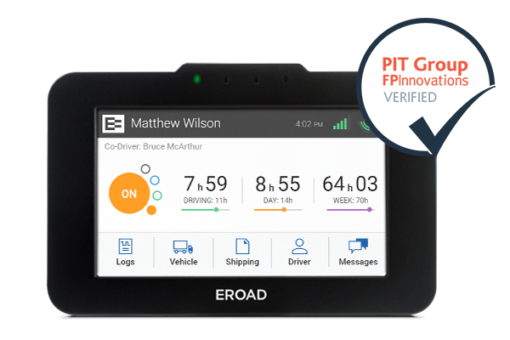

You must transition from AOBRDs to ELDs
With the December 16th deadline passed, you must make the transition to ELDs now.
Download this guide to get the 8 key considerations and 6 critical questions you need to know to make the best ELD decision for your fleet.
AOBRD vs ELD Comparison Chart
| Key Features & Requirements | AOBRD | ELD | Considerations During Transition |
|---|---|---|---|
| Roadside Inspections |
|
|
|
| Location Records |
|
|
|
| Automated Driving Status |
|
|
|
| Editing Driver's Records |
|
|
|
| Special Driving Categories (Yard Move and Personal Conveyance) |
|
|
|
| Unidentified Driving Trips |
|
|
|
Moving away from your AOBRD
Delaying your transition to ELDs may impact in ways significantly more severe than a reduction in productivity. There is a very real risk that your trucks could be taken off the road because they’re not compliant.
Why make the switch to EROAD’s ELD?
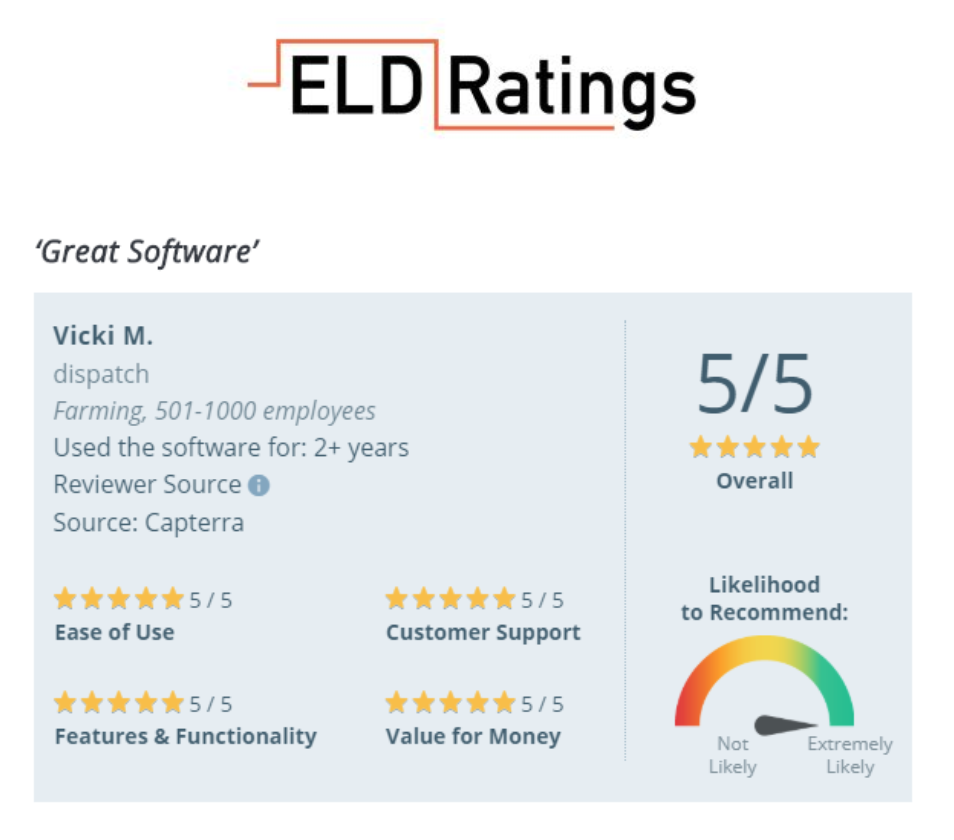
Don’t just take our word for it. Check out the reviews on independent review sites like ELDRatings.com. Or customer reviews on Capterra. And learn why G2 considers us a Leader for Fleet Management software.
Make your road to ELD compliance as smooth as possible
Take the hassles out of HOS compliance with an electronic logging device that gives you superior ease of use, accuracy and consistency.
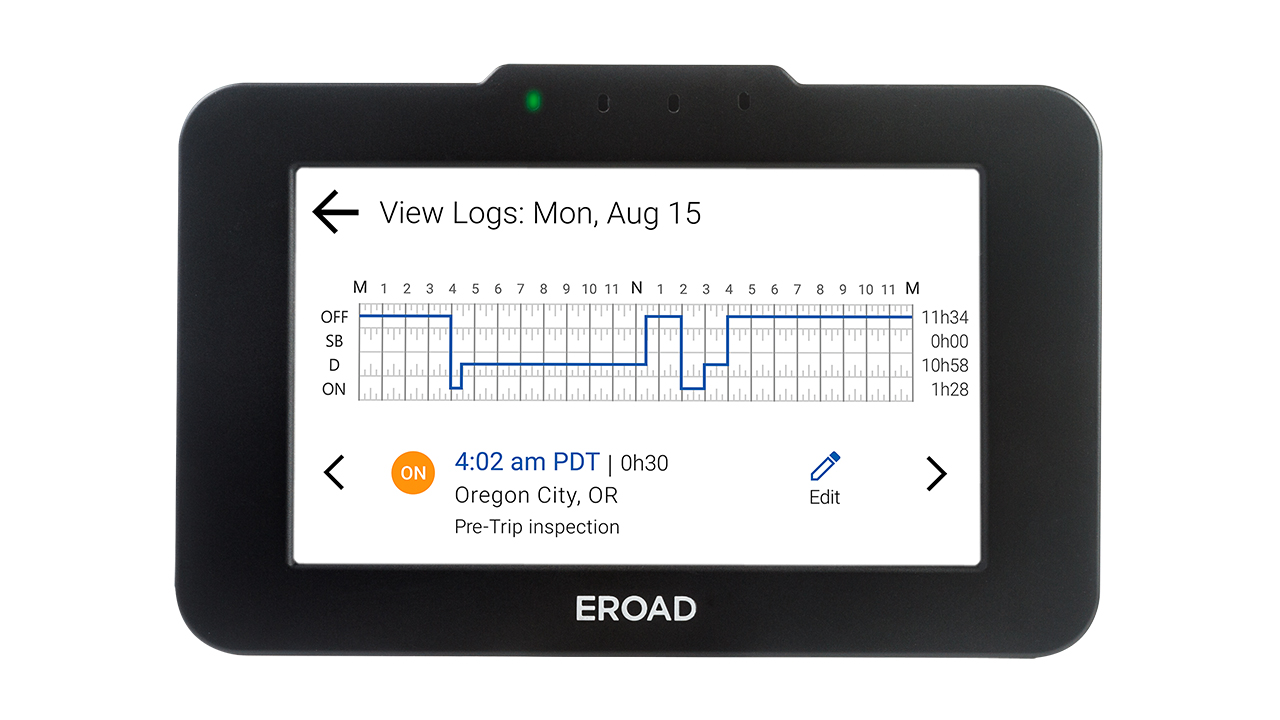
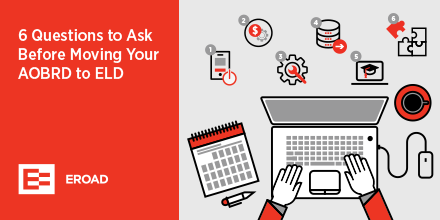
Don’t risk your fleet’s compliance
Don’t let your operations be left exposed to non-compliance. Make sure you know the 6 critical questions you should be asking from the very start.
FMCSA 395.8 ELD compliance timeline
| PAPER | ELS | AOBR | ELD | ||||
|---|---|---|---|---|---|---|---|
| February 16, 2016 |
“Effective date” ELD providers with compliant product can register on the FMCSA registry |
Phase 1 |
Awareness and transition – Carriers and drivers can voluntarily adopt ELDs. Should research and evaluate ELD options, and prepare to transition to ELDs. |
✓ | ✓ | ✓ | ✓ |
| December 18, 2017 |
“Compliance date” ELD becomes mandatory for qualifying carriers and drivers |
Phase 2 |
Phased-in compliance – Unless carriers and drivers are using AOBRs, must adopt ELDs. |
✓ | ✓ | ||
| December 16, 2019 |
“Full compliance date” End of AOBR Grandfathering All carriers and drivers must abandon AOBRs and use ELDs |
Phase 3 |
Full compliance – All carriers and drivers must adopt ELDs. |
✓ |
Understanding the ELD mandate
The Federal Motor Carrier Safety Administration (FMCSA) developed the ELD Mandate, which requires companies replace their paper logs with electronic logs.
There is a lot to learn about the ELD Mandate – we compiled the most important facts into a simple FAQ for you to look through.
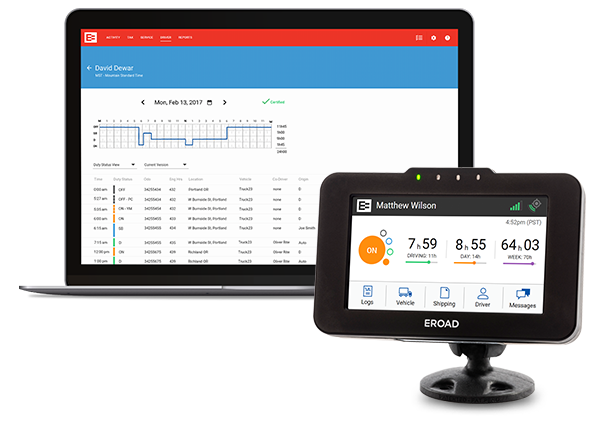
Who must comply?
The following drivers are exempt from installing and using ELDs and may continue to use manual paper or electronic logging system RODS:
- Drivers using paper logs no more than 8 days during any 30 day period
- Drivers who conduct driveaway – towaway operations, where vehicle being driven is the commodity being delivered (i.e. transporting an empty vehicle for sale, lease or repair)
- Drivers of vehicles manufactured before model year 2000.
Further, for those drivers who are not required to maintain RODS because they operate under the short haul/ 100-air mile exemption, may continue without adopting ELDs. However, if the driver exceeds the conditions of the exemption rule for more than 8 days in any 30 day period, those drivers will be required to adopt ELDs.
When does it apply?
This means that drivers using AOBRDs must also transition to using compliant ELDs, but they will have an additional two years to do so (until December 2019).
TIMELINE
February 16, 2016
“Effective Date” – ELD providers with compliant product can register on the FMCSA registry.
December 18, 2017
“Compliance Date” – ELD becomes mandatory for qualifying carriers and drivers.
December 16, 2019
“Full compliance date” – End of AOBRD Grandfathering. All carriers and drivers must abandon AOBRDs and use ELDs.
What are the key technical features of an ELD?
The ELD must support:
- Automatic capture of records at certain intervals from connecting to the vehicle: e.g. date, time, location, engine power status, engine hours, miles driven and motion status
- Personal Use and Yard Use are recorded against driving events if carrier authorizes the driver to use the special driving categories.
- Annotations and edits to ELD records to be permissible for drivers and carriers. However, original records cannot be overwritten and must be retained along with the edited versions.
- Detection of malfunctions with internal audit controls built into the system to notify data inconsistencies and system failures.
- Data transfer to enforcement officials to view on eRODS by either a telematics option (wireless web services and email); or local option (Bluetooth and USB).
- Driver HOS Graph Grid display to be available for the enforcement official without entering the vehicle, as backup to data transfer capability.
What should I look for in an ELD provider?
It is important for carriers to conduct due diligence on an ELD provider, their solution and their testing procedures. Ultimately, it will be the carrier that will inevitably run the risk of non-compliance with the regulations if the ELD solution malfunctions or is removed from the registry; as a potentially high stakes consequence, this could have a fleet running without a solution.
A confident ELD provider will be open and transparent around the technical development, testing frameworks and user feedback incorporated into their solution. A carrier should expect a clear and supported pathway for transitioning from the current state – using paper, AOBRD or electronic logs – to adopting an ELD solution that ideally brings alongside other complementary solutions across the business.
What does this mean for me and my drivers?
Key questions to ask:
- Will I need to change devices?
- How should I manage the transition?
- Is the solution simple and intuitive for my drivers?
- Will it be easy to train my drivers and staff?
- Will I be compliant using it now and in the future?
- Will I have the right support from my technology provider?
- Will the solution meet my operational needs?
- Owner operators with personal use
- Yard use
- Easy installation for my lease vehicles
- Team driving
- Multiple terminals
- Outsourcing back office administration
- Can I leverage the solution for other value added services?
- Fleet management and real time tracking
- Commercial reporting on fuel, idle, speed and geofences
- Electronic tax reporting and filing for IFTA and WMT
- DVIR, vehicle service and maintenance management
Ready to see what the EROAD ELD can do?
Contact us to schedule your demo.

